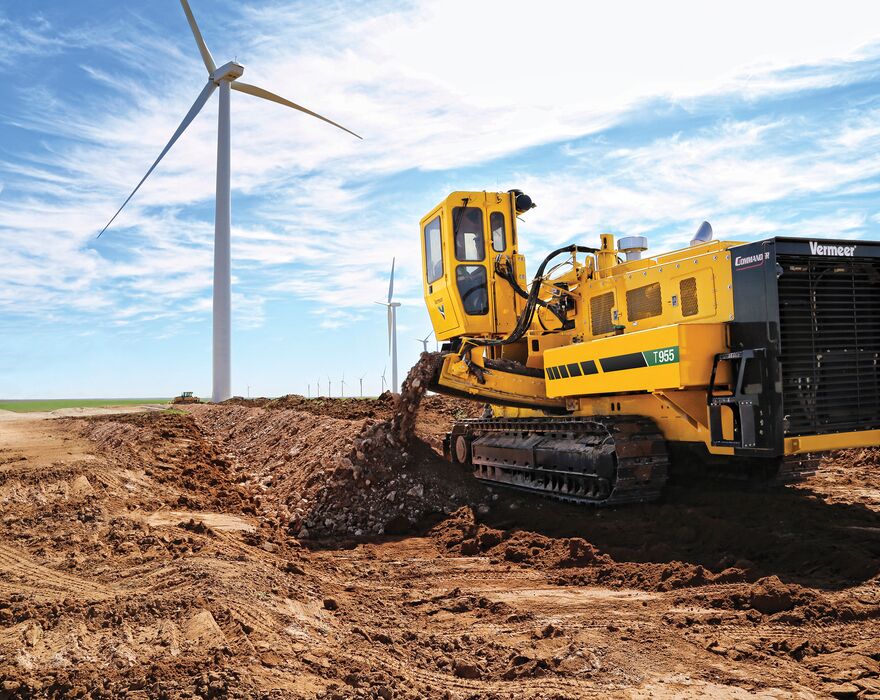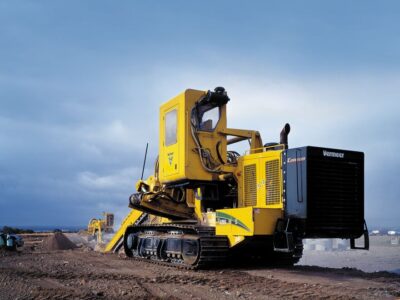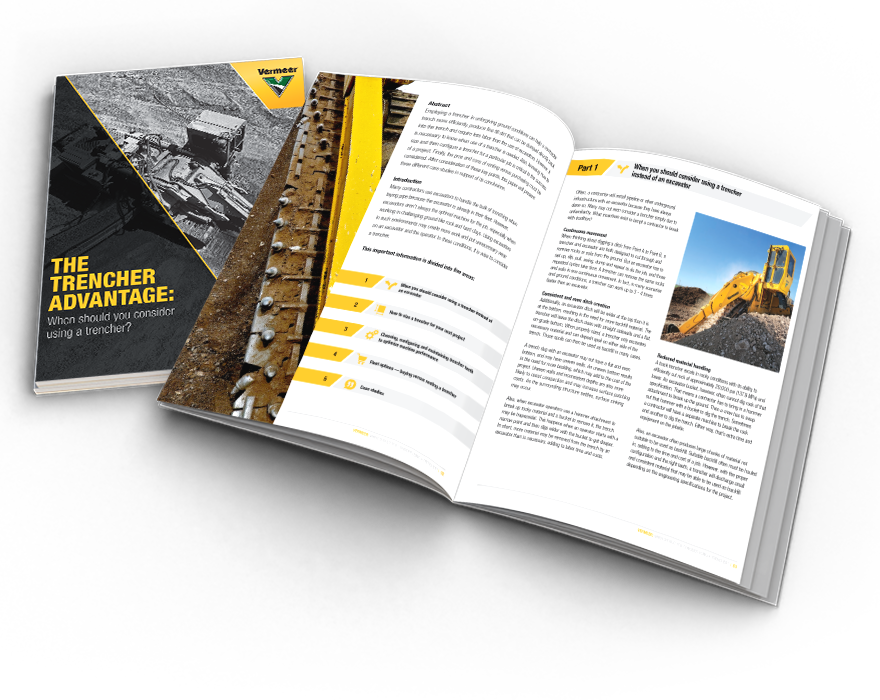Vermeer trenchers remain a vital method for utility installation due to their adaptability across different jobsites. From small residential projects to large-scale industrial applications, trenchers support a wide variety of jobsites. The Vermeer trencher lineup of small, mid-size and large trenchers speaks to the versatility of these machines.
Choosing the right trencher for different types of utility installations helps you maximize your overall jobsite productivity. Read on to find out which size of Vermeer trencher to use at your jobsite.
What is a trencher?
The term “trencher” refers to various types of dirt-digging machines.
Trencher equipment varies in size, ranging from small 13-hp (10-kW) walk-behind models to massive 600-hp (447-kW) units.
Many models are also designed for different depths, widths and soil types, making Vermeer trenchers suitable for installing utilities like fiber, gas and water.
Small trenchers for residential work
Smaller trenchers, pedestrian, walk-behind and walk-beside variants are excellent for installing small-diameter utilities at shallow depths. These machines are often used to lay fiber, water, irrigation and gas lines over short distances in residential neighborhoods.
“Small trenchers and vibratory plows excel at residential work,” explained Nick Olsen, product manager at Vermeer. “They are the overlooked machines that deliver fiber to homes worldwide. And much of the industry prefers smaller tracked models that can fit through tight gates while still having enough counterweight and stability for cutting a trench for lines to be laid.”
“Vibratory plows like the Vermeer SPX25 are ideal for working in softer soil conditions. In comparison, combo units like the Vermeer PTX40 plow/trencher provide more versatility for contractors working in harder conditions or need to bury product deeper in the ground.”
Mid-sized utility trenchers provide attachment options
“Ride-on tractors” is a term used in the industry for mid-sized utility trenchers. Most ride-on tractors in this category can change attachments. They usually work over longer distances in softer soil conditions like clay and loam.
Mid-sized trenchers are often used for installing fiber, underground distribution electrical lines and connecting solar farms and wind turbines to the electrical grid.
Large pipeline trenchers excel in difficult ground conditions
Used for cutting deep and wide trenches in hard clay and rocky ground conditions, pipeline trenchers are impressive machines that can optimize crews’ production by installing large diameter casing and high-density polyethylene (HDPE) pipe at deeper depths.
Large trenchers are often needed for performing electrical connections on renewable energy projects, as well as pipeline work for oil and gas, water and sewer, and the hardening (undergrounding) of electrical distribution and transmission lines.

Trencher size and configuration: How deep Vermeer trenchers dig
Small walk-behind and walk-beside trenchers can dig trenches up to 42 in (106.7 cm) deep and 6 in (15.2 cm) wide.
Utility ride-on tractors with trencher attachments can dig twice as deep and wide.
Large trenchers, with varying boom lengths and chain configurations, can reach depths of 18 ft (5.5 m) and widths of 4 ft (1.2 m).
Understanding the trenching depth requirements of your jobsite is important when selecting which trencher to use. Residential jobs often require shallower trenches dug by small and mid-size utility trenchers. Large pipe installations require the power and depth provided by our large trenchers.
While these specifications are an important factor for deciding the right size of trencher for a project, ground conditions play a significant role.
“In challenging ground conditions, such as rocky terrains, a larger trencher that can produce more torque is necessary for effective ditch cutting,” Olsen explained. “More torque is also needed for digging deeper and wider ditches. However, high torque levels result in greater fuel consumption. Therefore, choosing the largest trencher model for every project is not always beneficial.”
“Instead, opt for a trencher model that strikes a balance between productivity and operating efficiency.”
For more information about Vermeer pedestrian trenchers, ride-on tractors or large pipeline trenchers, contact your local Vermeer dealer today.
Vermeer Corporation reserves the right to make changes in engineering, design and specifications; add improvements; or discontinue manufacturing at any time without notice or obligation. Equipment shown is for illustrative purposes only and may display optional accessories or components specific to their global region. Please contact your local Vermeer dealer for more information on machine specifications.
Vermeer and the Vermeer logo are trademarks of Vermeer Manufacturing Company in the U.S. and/or other countries.
© 2024 Vermeer Corporation. All Rights Reserved

